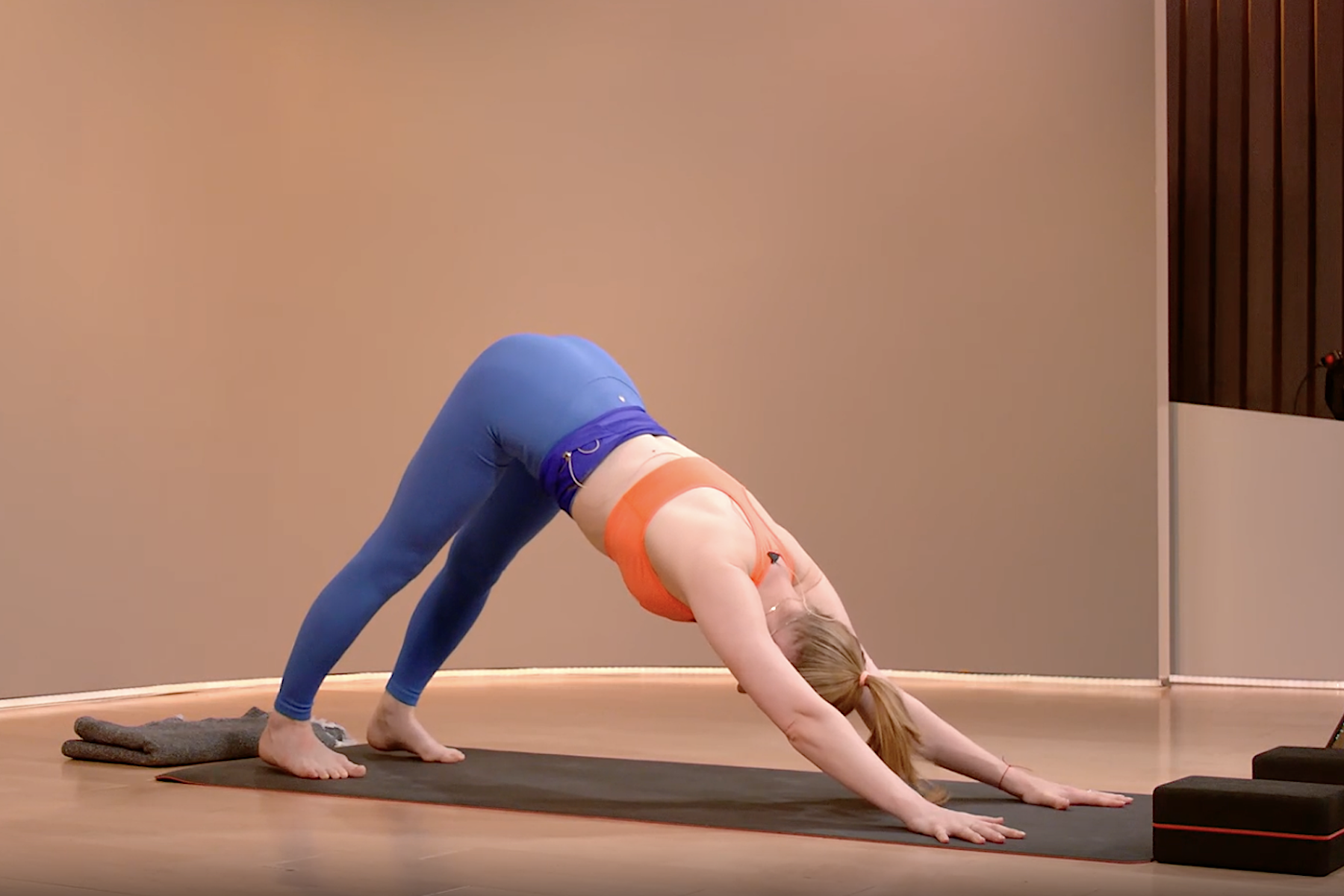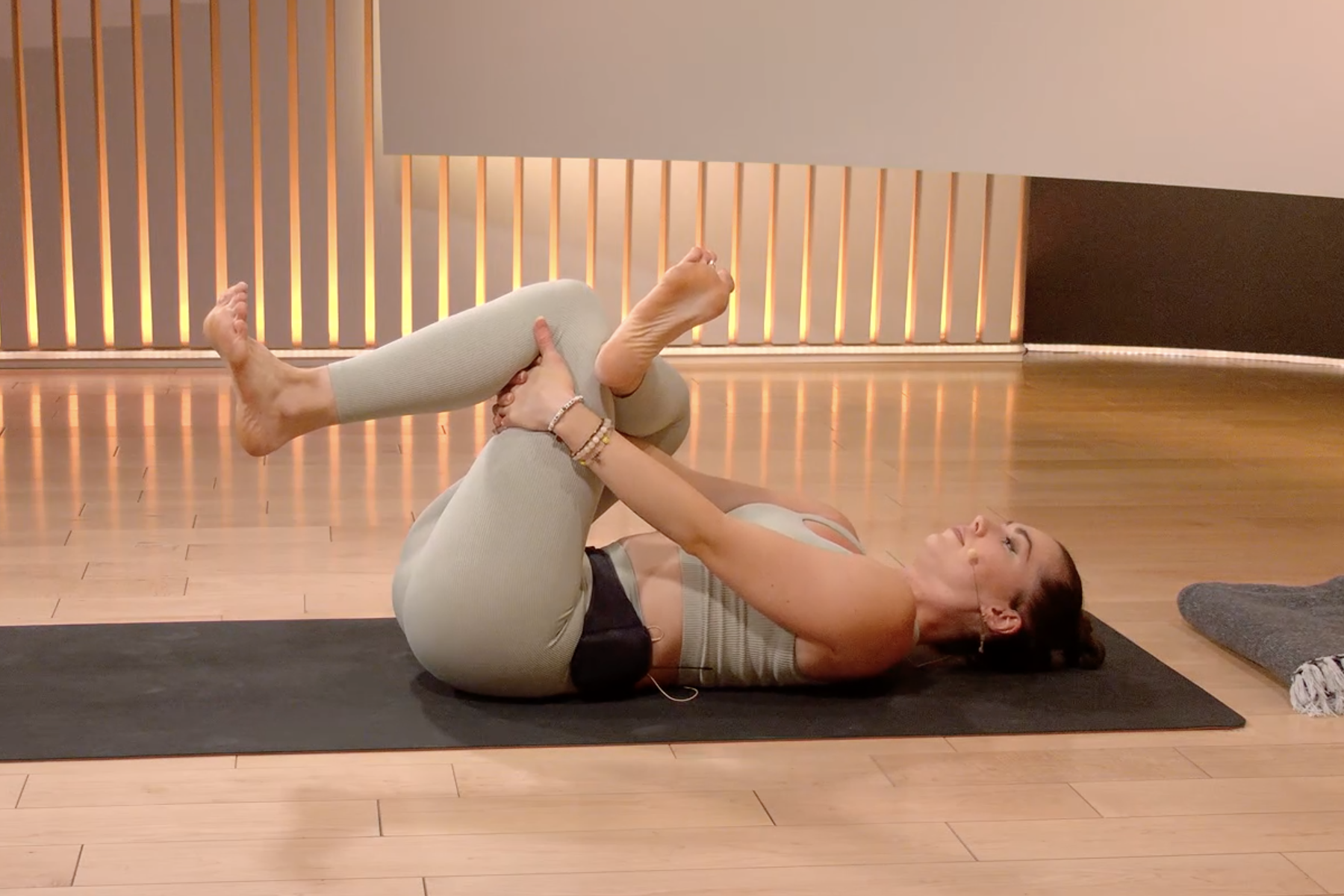
The Good Brigade/Digital Vision via Getty Images
The Key Benefits of Yoga for Runners—and 5 Poses to Try
You won’t believe how much stronger you feel.
By Lucy Maher•
Benefits of Yoga for Runners
How to Incorporate Yoga Into Your Training Schedule
5 Best Yoga Poses for Runners
If you’re a runner, you know the thrill of setting a new personal best—running faster or further than you ever have before. You also know about some of running’s drawbacks, including muscle imbalances, tight quads and calves, and a lack of flexibility. All of these things can make you more prone to injury.
The solution isn’t necessarily to do less, but rather, do things a bit differently. Working yoga into your running routine takes a little planning, but it may just be the secret to helping you stay injury-free—and even improving your athletic performance.
Benefits of Yoga for Runners
A 2016 study published in the International Journal of Yoga found that athletes who took part in biweekly yoga sessions over a 10-week period improved their flexibility and balance.
These results aren’t necessarily surprising. “Yoga boosts performance,” says Kristin McGee, a Peloton instructor. “It also helps runners with recovery, strengthens their mental game, helps with breathing more efficiently, builds upper body strength (which some runners neglect), opens up tight hips, quads and hamstrings, and builds core strength.”
Yoga Makes You a Stronger Runner
Even the most self-aware runners can fall into the trap of logging mile upon mile in an effort to hit a new personal record. This kind of singular focus on running can be detrimental, resulting in muscle and joint imbalances—and in some cases, injury.
Yoga can help you effectively cross-train and stay active on your recovery days. At the same time, yoga reduces your risk of injury by increasing your mobility and strength. While running is essentially a two-dimensional activity (you’re traveling forward in a straight line), yoga is a three-dimensional modality, incorporating side-to-side movements that work muscles you don’t tap into with running.
Rather than thinking about the miles you’re missing out on when practicing yoga, focus on how it enables you to be a better runner. “I love how yoga strengthens the upper body via moves like Downward-Facing Dog (Adho Mukha Svanasana) and Chaturanga,” Kristin says. “After all, our arms are an extension of our legs, which can help us when we are sprinting or going up hills.”
Another benefit of yoga for runners? You may have trouble controlling your breath as you move on the Peloton Tread or the pavement. Yoga can help, teaching you how to maintain even breaths. After all, the practice is based around your breath.
“The way you breathe on the yoga mat can be carried into the way you breathe and focus on a run,” Kristin says. “When the discomfort hits, you can learn to breathe into it, and move through the discomfort. I personally have relied on my yoga breathing plenty of times on my runs.”
Yoga Raises Your Mental Game
From helping you control your pre-race jitters or manage fatigue on a run, yoga can help improve your mindset. Yoga focuses on the here and now. That means solely thinking about breathing in and out, and simply being in the moment during your practice.
The ability to push aside your concerns about pace or small discomforts during a race may allow you to push yourself a little harder. This yogic mindset also gives you the tools to turn to when running gets hard, teaching you to focus on the rhythm of your breath.
Yoga Improves Running Performance
There is little direct evidence that practicing yoga will make you run faster or longer. However, there are plenty of indirect ways yoga benefits your body, which in turn, can boost your running performance.
Yoga can reduce chronic lower back pain, a source of discomfort for many endurance runners. Research published in the Annals of Internal Medicine found that yoga was a comparable treatment to physical therapy in treating chronic lower back pain. (And less pain means more opportunities to train.)
The improvement in flexibility and balance that comes from a regular yoga practice can help you lengthen your stride and have a more even gait when running. However, having too much flexibility and too little strength can put undue stress on your muscles, potentially leading to injury. Make sure to balance your running workouts with a yoga and strength routine.
How to Incorporate Yoga Into Your Training Schedule
Doing yoga two to three days a week is ideal, Kristin says. She recommends two 20-minute or 30-minute sessions and one longer 45-minute yoga class. Short on time? Even a small amount of yoga can still help you stay flexible and avoid injury.
Types of Yoga
If you’re curious about giving yoga a try, there are different types to choose from. Slow flow classes are ideal for beginners who need time to move in and out of poses. In restorative yoga classes, you’ll hold your poses for a bit longer and use props to make the effort a bit easier. Up for more movement? Choose a class that has a quicker pace, such as a yoga conditioning or power class. On the Peloton App, you’ll also find classes that focus on specific body parts that often tighten up on runners, such as hamstrings and hips.

Peloton App
Access thousands of classes with no equipment needed.
5 Best Yoga Poses for Runners
Want to start moving through a few poses? Try these five asanas that are tailored to address runners’ tight areas and strengthen their weak spots.

Downward-Facing Dog Pose
This posture gives your hamstrings and calves a good stretch while also strengthening your arms and abdominal muscles.
Start on all fours. Make sure your hips are over your knees and your shoulders are directly over your wrists. Curl your toes under. Push through your feet and hands as you raise your hips toward the ceiling.
Straighten your arms and legs. Your body should form an inverted V-shape. Let your head relax toward the floor.
Press your palms and the heels of your feet into the floor as you breathe in and out for 10 counts.
Muscles stretched: Hamstrings, calves, back

Pigeon Pose (Eka Pada Rajakapotasana)
It’s a pose that all runners should have in their arsenal of moves: Pigeon Pose. As the ultimate hip-opening exercise, this posture also stretches your groin, back, and piriformis.
Begin in Downward-Facing Dog.
Bring your right knee in toward your right wrist, as you shift your weight forward. Place your right shin parallel to the top of your mat. (If this position isn’t accessible to you, your shin can be at an angle.)
Place your hands on either side of your right shin.
Keeping your left leg extended behind you, bend forward over your right leg to feel a deeper stretch in your hips, groin, and piriformis.
Hold for 10 counts. Repeat on the opposite side.
Muscles stretched: Hips, groin, back, piriformis, psoas

Child’s Pose (Balasana)
This pose provides a gentle stretch for your groin, inner thighs, hips, and back.
Start on all fours. Move your feet so that your toes touch each other. Spread your knees wide or keep them glued together.
Sink your hips back and stretch your arms forward. (If the stretch is too intense, use a yoga block underneath your butt for support.)
Hold for 10 counts.

Deep Squat (Malasana)
This posture opens up your hips and stretches the groin.
Start with feet hip-width apart, toes slightly turned out.
Bend your knees and drop your butt toward the floor. Try to sink as long as you can while keeping both of your heels on the floor.
If you are having trouble moving into a deeper position, use a yoga block under your butt for support. Hold for 10 counts.
Muscles stretched: Glutes, groin

Reclining Pigeon Pose (Supta Kapotasana)
This Pigeon Pose variation gives your glutes a deep stretch.
Start lying on your back, knees bent, feet flat on the floor.
Lift your feet off of the ground. Cross your left ankle over your right thigh.
Grab the back of your right thigh with both hands. Gently pull your legs closer to your chest.
Hold for 10 counts. Repeat on the opposite side.
Muscles stretched: Glutes, IT band, hamstrings
This content is for informational and educational purposes only and does not constitute individualized advice. It is not intended to replace professional medical evaluation, diagnosis, or treatment. Seek the advice of your physician for questions you may have regarding your health or a medical condition. If you are having a medical emergency, call your physician or 911 immediately.
Level up your inbox.
Subscribe for a weekly dose of fitness, plus the latest promos, launches, and events.
By providing your email address, you agree to receive marketing communications from Peloton.
For more about how we use your information, see our Privacy Policy.










